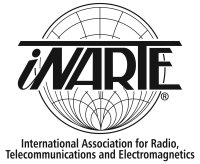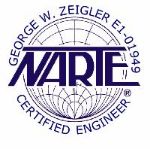Lightning and EMC Protection for Video Systems - ZM
Daniel Soleil
EMC Engineering, F-13 Senas
And
Alain Alcaras
Hardening engineer, THALES Communications, F-92 Colombes
Society of Automotive Engineers, Inc. Copyright © 2001
ABSTRACT
This document describes the unclassified part of the lightning protection studies for a video control system. The study was held during September 1994 at Cruas Nuclear Power Plant (F-07). Positive improvements were seen immediately and long term benefits have been reinforced by continued protection.
The studies were conducted with a new EMC (Electromagnetic Compatibility) concept: “Zero Method”. This concept uses an accessible and easy process to control the industrial electromagnetic interference from radio, cellular phones and lightning effects. The adopted solutions improve personnel and facility safety and provide a cost effective solution.
INTRODUCTION
Existing standards {1, 2, and 3} on lightning protection of structures address direct effects. There is no standard for indirect effects, only guides.
Numerical approaches to computing protection are available. Unfortunately, such complex studies are expensive. They are usually only reserved for justified cases.
Other methods mix numerical calculations and on-site testing.
Some test methods are efficient but require current injection into the system. For sensitive systems, where control loss is prohibited, this may not be acceptable. In this paper, we present an experimental method (Zero Method) and illustrate this using an example. This method takes into account the constraints required for the protection of a complex and sensitive system.
The zero method benefits from simplicity, minimal cost and low maintenance expense.
PROGRAM OF STUDIES
The Cruas Nuclear Power Plant TV supervision system uses 200 video cameras and their associated circuits. Storms either nearby or on the site could damage up to 160 systems.
This damage would be internal to the equipment with no visible indication.
Specific actions {4} using surge arresters and different earthing arrangements {5} did not give the expected reliability for safe operation. Therefore, the EMC study was extended to encompass the whole video system.
The study included:
- General report on the observed problems and damage.
- Gaining a thorough understanding of the electrical circuits.
- Update of the previously used EMC Zero Method and dialog with participants involved.
- Measurement of RF waves and industrial disturbances on:
- Video cameras, coaxial links and power supplies in several locations
- Video processing equipment (receiver, transmitter…)
- Transmission system, earth and ground circuits, cable shielding and mechanical protection
- Enclosures at the main gate
- Interpretation of results, corrective action and checking of methodology used.
A NEW EMC QUALITY CONCEPT: ZERO METHOD
Definition of the Zero Method
The Zero Method consists of an attempt to decrease any currents and voltages induced in each circuit located in a sensitive system to zero.
For example, the voltage potential voltage between two reference points is set to zero not by decreasing the impedance between two reference points but by attempting to minimize the current flowing between these points.
Usually, a system may be illustrated as shown in Fig.1.
Origins of the Electromagnetic disturbances
Electromagnetic disturbances {7} have two different sources:
- Industrial origin: These are at the main power supply frequency and essentially created by electronic power components
- RF wave origin: These are antenna and loop effects caused by RF (Radio Frequency) waves from the environment. These phenomena can be correlated to lightning effects, conducted and radiated.
- Putting the Zero Method into practice
- This electromagnetic “cleanness” translates electrically into reference potentials (Fig.1) that remain at the same reference voltage at all points in the circuit at all times:
- v = 0 : designates a voltage that varies very slightly and is independent of frequency, amplitude, modulation, etc.
- i = 0: classically HF (High Frequency) currents address problems from several kHz up to 10 MHz.
Fig. 1- Zero Method concept
As an example, Electro-encephalographic and Magneto-encephalographic systems {8} achieve good results when applying this engineering method.
The Perturbometer (®)
To apply the zero method, specific equipment has been designed called the Perturbometer (shown Fig.2).
This equipment replaces the use of an oscilloscope and HF peak voltmeter assembly, which are not convenient for field use.
Fig. 2- EMC Perturbometer ®
The Perturbometer only measures peak values of voltages and currents in the frequency range of 10 kHz to 10 MHz.
This concept also moves towards new specific components matched with the Zero Method criteria and permanent disturbance control equipment.
OBSERVATIONS INSIDE OF VIDEO CAMERAS
Measurement of electromagnetic disturbance levels
In some video cameras, a voltage up to 5 Vp was measured between the coaxial and the case and 3 Vp (RF) between Phase and Neutral or between Neutral and case. Other video cameras also experienced significant levels; these depended on their geographical location.
Trying to reduce these voltages will also decrease the proportional lightning effects.
Equivalent design for electromagnetic disturbances
An external video camera (the internal video camera is similar) reacts (Fig.3) as a lot of distributed capacitors:
- Cd1 distributed capacitance between the electronic zero and the ground of the case = 4,8 nF strap E opened,
- C2 capacitor between the Phase or Neutral power supply and the ground of the case = 20 nF strap M closed (each C anti-interference = 10 nF),
- Cd3 distributed capacitance between the Phase or Neutral power supply and the ground of the case = 273 pF of strap M opened,
Fig.3- Equivalent design for electromagnetic disturbances
Note: The transformer is designed with the Primary and Secondary overlapping coils inducing a strong capacitive coupling between the Primary and the Secondary.
Non equipotentiality BETWEEN VIDEO camera/ video equipment ground references
Grounding locations of video cameras and equipment are not equipotential for HF currents. This is caused by the distance (1 Km) between the camera and equipment. The more stable potential is found at the video equipment.
WORK PERFORMED ON VIDEO CAMERAS
Aim
The aim is to obtain v (HF) = 0 inside each video camera. This would be between the electronic ground and the power supply ground relative to the case to comply with personnel safety requirements (Fig.4).
Configuration of the straps inside video cameras
- connection of strap E
- connection of strap M
- connection of Earth with the strap ground (to meet personnel safety requirements)
Insulation of each video camera case
The case of a video camera will be insulated from its environment. For personnel safety reasons this isolation would not be present for low frequency currents. To achieve this, install an insulation sheet between video camera and support and fix using nylon screws. Insulate the metallic housing and connect it with a 2, 5 mm2 wire to the support as an electromagnetic screen.
Pseudo-insulation of each video camera system
Fig.4- video camera rectification scheme
- Install a choke coil (Ref: INDC 70 2F i.e. 70 mA, 2 protected wires, rated at 10 kV peak) before the video camera.
- Install a splitting up coil of earth 5 A circuits, (Ref: TER 5 A i.e. 5 A, rated at 10 kV peak), in series with the grounding wire before the video camera.
Note: A splitting up coil consists of a small wire earth rolled around a specialized magnetic nucleus. The interconnection is well suited for grounding to meet personnel safety requirements. The following example (Fig.5) shows the characteristic of a TER 50 A.
Fig. 5- V=f(I) for a splitting up 50 A rms earth coil
It has been plotted from 0, 2% in to 14 x In (In: nominal rms current).
In figure 5, we observe 3 characteristic zones:
- At low current: important impedance (and low voltage
- Around nominal zone: voltage under few volts
- At high current zone: it remains voltage with the resistor wire.
General earthing circuit
To achieve equipotentiality, several hundred meters of 4mm2 earthing wire is used. This principle is reinforced by using a 25 mm2 wire connected to the main earthing arrangement.
VIDEO EQUIPMENTS CHANGES
Interconnection of grounds
The aim is to obtain v = 0 between power supply wires and coaxial cables relative to the ground at each piece of video equipment. A 50 mm2 ground wire will be installed (Fig.6) using the shortest distance between the different pieces of electronic video equipment. It will be connected at two extremities of the earthing arrangement through a splitting up coil of earth 50 A circuits (TER 50 A).
Fig.6- New earthing arrangement where i=0
Protection OF THE 230 V UPS power supply
The power supply circuits {5} for the video equipment will be protected (Fig.7) by insertion of an Absorber Wave Filter AWF-M (M=single phase).
Fig. 7- Protection of the line supply
The Absorber Wave Filter AWF-M
Fig.8- Equivalent circuit for an Absorber Wave Filter AWF‑M
This is fed in parallel with the mains (or direct current source) (Fig.8) and constitutes the last stage of a low-pass filter using distributed elements (Cp1-Cp2-zs). The Absorber Wave Filter decreases the industrial or RF disturbances Gp1 and Gp2 (as shown in Fig.8).
Fig.9- Attenuation of common mode voltage of a 20 KVA single-phase transformer by an AWF-M
Differential and common mode attenuation of HF voltage allows v = 0 to be reached inside the sensitive equipment (Fig.9).
Remark
The video entry circuit is not satisfactory. An asymmetric/symmetric effective part will be studied to allow the direct-earthed connection for each coaxial video.
OBSERVATIONS ON COAXIAL VIDEO
Two coaxial cable types are employed
Each video camera link uses a 75 Ohm coaxial cable and this can use either:
- An armored video cable or
- A second armored cable containing 3 video cables (Triaxial)
- Earthing arrangement for armoured cables
- All coaxial cables have armored insulated cables
- The armored cable is earthed at several points along the cable length
Induced current could create a surge voltage, which can cause the failure of the video camera and printed board input circuits.
Consequently, via capacitive effects, the armored cable transmits a part of the current that it receives to the coaxial shielding.
Armoured video cable changes
2 Vp (HF) of industrial disturbance and RF waves are observed between the two ends of the armored cable near the video equipment.
It is possible to identify five links that constitute large parasitic loops (Fig.10):
- The connections to the earthing arrangement,
- The earthing arrangement itself,
- Each coaxial video cable,
- The cable armor,
- The power supply wires,
Fig. 10- Original equivalent scheme for supervisor video system
These different loops are submitted to strong electromagnetic fields during the lightning strike period and develop surge voltages, across different parts of the system
VIDEO COAXIAL CABLE CHANGES
The aim for coaxial connection armours
The aim is to achieve electrical continuity between all the armors without direct interconnection to the earthing arrangement. This must be done by maintaining coaxial cable independence from the earth. Personnel safety is assured with the interconnection of the armors and the earthing arrangement through several splitting up coils (earth 5 A circuits)
Electromagnetic balance of a coaxial
The grounding of each armored cable at the video equipment assembly is by a short connection to a metallic ground point which itself should be connected to a good earth.
NEW CONFIGURATION FOR THE SUPERVISOR SYSTEM
The next configuration (Fig.11) allows satisfaction of both personal safety and zero method requirements. The main requirements are:
- An earthing connection for personnel safety,
- A link by video cable,
- Mechanical protection of the coaxial cable by its metallic armor,
- v = 0 and i = 0 inside of each video camera.
Fig. 11- New equivalent scheme for supervisor video system where i=0
VICINITY OF THE MAIN GATE
Antenna effect
Two metallic enclosures associated with the main gate form a double-antenna. These experience the maximum voltage problems for the coaxial cable path. A third enclosure, in front of the main gate (but on the opposite side of the road) encloses parking for vehicles.
Enclosure changes
To reach equipotential enclosure earthing (mainly in the vicinity of the video cameras), the shortest possible connections are preferred.
Fig. 12- Enclosures and the main gate
The earthing circuit of the main gate enclosure will be made (Fig.12) with 2 plates (for redundancy) {9} buried in the side of the ditch. These benefit from a very damp zone that has a low soil resistance. An uncovered 50 mm2 copper strap is connected to the opposite enclosure of the main gate and a third strap connects the opposite enclosure on the other side of the road.
The enclosure (Fig.16) is connected with an uncovered 50 mm2 copper cable placed at the base and periodically connected with the posts at twenty meter lengths on each side of the main connections. This earth collector is also grounded with 2 ordinary ground posts.
For personnel safety, a second interconnection to the grounding arrangement is made {10} through a splitting up coil of earth 50 A circuit TER 50 A. This is similar to the grounding for rods and line surge arresters (Fig.13); this ensures that the HF interference is kept out of the grounding arrangement.
The plates are square with a 1, 5 to 2 m length. They are made from grid copper or stainless steel with a 2 mm thickness. This gives low lightning current density and high capacitive effect with the soil. Soil pickets do not offer these benefits.
Fig. 13- Example of fictitious interconnection for lightning effects
A protection box contains the different earth circuits and will allow the general connection protection and the control of resistance and HF voltages and currents at the:
- Enclosure parking potential,
- Enclosure main gate potential,
- Earthing arrangement potential.
RESULTS OBSERVED DURING A FOUR YEAR PERIOD
The supervisor currents have been reduced by a factor of 10 for difficult zones and up to several hundred for others.
Since 1995, the failure rate has been lowered with comparable ratios and no maintenance action has been required on the supervisor video system.
MONITORING OF THE ELECTROMAGNETIC PROTECTION QUALITY
This is similar to the control of insulation to maintain personnel safety.
The measurement of this “Electromagnetic Quality" follows the steps described below:
- Measurement of sources of energy between Neutral and earth and phases and earth
- Measurement of direct current sources of energy between + and – and earth
- Measurements at dispatching points of sources of energy.
- Measurements inside sensitive parts, between circuit zero reference points, metallic frameworks and the case.
- Measurements of the signal between the system reference and earth potential.
Absolute voltage measurements must all be less than 1 Vp. Every value above this is must be investigated and will require understanding and correction.
DISCUSSION OF THE ZERO METHOD
Lightning stresses are developed in common mode (earth and ground plane and conductor), the differential mode stresses or secondary-common mode stresses are due to multiple attenuation of the common mode stress (i.e. the transfer function between common mode and differential mode).
Reduction or diversion of common mode voltages and currents reduce the need for differential protection circuits, which can offer a poor solution to the problem.
The use of the Zero Method provides a way to overcome this.
Conclusion
The application described above shows that an experimental approach exists for the study and design of protection for sensitive and complex structures against indirect lightning effects.
This new method can be proposed as a new standard for induced effect protection in a complex system (for RF, industrial generated interference and lightning).
The principle of the Zero Method consists of solving the problem at the common mode level and not at the circuit-port level (which would be a differential mode solution).
This method avoids installation of specialized protection circuits, which can affect the signal of interest, produce an unsatisfactory solution or deviate the trouble elsewhere.
The fitting of the protection identified with this method consists of deviation and attenuation of the HF common mode disturbance (with respect to the reference potential). The path and the location of this disturbance are therefore controlled.
references
- CEI 1312-1 Protection against Lightning Electromagnetic Pulse – Part 1: Main Principals (Standard, February 1995)
- CEI 1662 Assessment of failure risks due to the lightning (Standard, April 1995)
- CEI 81/63/CD: IEC 1312-2 Protection against Lightning Electromagnetic Pulse – Part 2: Electromagnetic fields inside structures in case of direct and nearby lightning strikes (Standard project, November 1994)
- Web site EDF: https://www.edf.fr- consult «Lightning».
- UIC-GESIP: Recommendations pour la protection des installations industrielles contre les effets de la foudre pour l’application de l’Arrêté du 28 Janvier 1993 concernant la protection contre la foudre de certaines installations classées. Rapport n° 94-02 / Octobre 2000.
- Web site: Daniel Soleil – EMC Consulting: http://pro.wanadoo.fr/geniecem - A lot of « zero method » applications.
- 1995 - SEE - Dauphinée-Savoie - Grenoble (F) (Co-author: Jacques Heim - SPSE): Maîtrise expérimentale des perturbations radioélectriques et des effets de la foudre.
- Proceeding of the 14th Annual International Conference of the IEEE Engineering in Medicine and Biology Society - Innovations in Biomedical Engineering in the Year of the European Unified Market. Co-authors: Jean-Michel Badier (CHU Marseille), Maryvonne Lemesle (CHU Rennes) Communication presented from “Palais des Congrès, Porte Maillot” in Paris (France), on October 31th 1992, text n° 92 CH 3207-8 pp 1134 & 1135,"Zero" solution for shielding and electrical protection in a unit for electroencephalographic recording.
- July-August 1999 - Electrical Line “Conductive concrete electrode: a new grounding technology”
- 2000 - EUROCORR 2000 - London (GB) (Co-authors: Etienne Houbiguian - Total Fina Elf Sa - Miguel De Castro SPSE): Earthed circuits, grounded circuits and cathodic circuits - Experimental “Zero Method” used to interpret the obvious regulation incompatibilities.
International Conference on Lightning and Static Electricity (ICOLSE) to be held at the Aerospace Congress and Exhibition (ACE) in Seattle, Washington, USA on 11-13 September, 2001.





